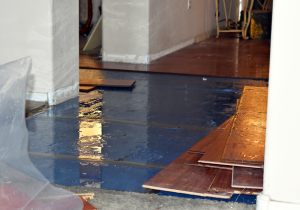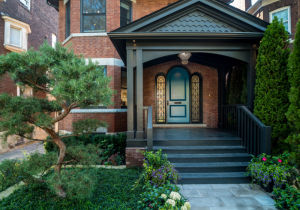Must-Have Waterproofing Upgrades for Older Homes

Owning an older home can be a source of pride and joy, offering character and charm that newer homes simply can’t match. However, nestled within the nooks and crannies of its history are potential challenges, none more persistent and damaging than water intrusion. The reality is that, without the right defences, water has the uncanny ability to find its way into any vulnerability, leading to damage that can be costly, both financially and structurally. Recognizing the importance of safeguarding your cherished residence is the first step in a proactive approach towards waterproofing upgrades.
 The Perils of Water Damage in Historic Dwellings
The Perils of Water Damage in Historic Dwellings
Water damage in older homes is not just a surface-level issue; it goes deep, affecting the very core of the property’s structure. From weakening foundations to promoting mold growth, the effects can be devastating. Especially vulnerable are areas such as basements, which often serve as the home’s foundation, roofs laden with years of weather wear, and the structural foundation itself, where even minor cracks can lead to major woes.
Understanding the common battlegrounds in older homes is crucial. The basement, for example, is often subject to hydrostatic pressure from water in the soil surrounding the home, forcing water through any available crack or crevice. Roofs, particularly those that haven’t been updated or inspected regularly, can succumb to leaks from heavy rains, snow melt, or ice dams. Similarly, foundational issues, such as cracks or gaps, can become express lanes for water entry, undermining the home’s integrity from below.
Essential Waterproofing Upgrades
When it comes to waterproofing upgrades, the approach is twofold: interior solutions aimed at managing water that has entered the home, and exterior upgrades designed to keep water out in the first place.
Interior Upgrades
- Sump Pumps: Installing a sump pump system can be a game changer for basements prone to flooding. It collects water and pumps it away from the home’s foundation.
- Dehumidifiers: For basements or crawl spaces that struggle with dampness, a high-quality dehumidifier can help keep moisture levels in check, preventing mold growth and wood rot.
Exterior Upgrades
- Gutters and Downspouts: Properly functioning gutters and downspouts are fundamental to directing water away from the home. Regular cleaning and maintenance prevent blockages that can cause water to overflow and seep into the foundation.
- French Drains: This drainage solution involves installing a trench filled with gravel and a perforated pipe to reroute surface water and groundwater away from your home.
- Waterproof Coatings and Sealants: Applying waterproof coatings or sealants to the exterior walls of the basement or foundation can block water from penetrating through.
 The Cost-Benefit Analysis
The Cost-Benefit Analysis
While the initial cost of these waterproofing upgrades might be a concern, it’s essential to consider the long-term benefits. Not only do these improvements protect the structural integrity of your home, but they also prevent the potential costs associated with water damage repairs, which can easily run into the thousands. Furthermore, these upgrades can significantly increase your property’s value and appeal, a crucial factor should you decide to sell.
Waterproofing your older home is an investment in its longevity and resilience. By addressing the areas most susceptible to water damage and implementing both interior and exterior waterproofing solutions, you protect not just your home, but also the memories and treasures it houses.
The charm and history of an older home come with unique responsibilities, particularly when it comes to waterproofing. Taking proactive steps now can save you from the headaches of water damage repair down the line. Consider consulting with a waterproofing specialist who can provide a tailored solution for your home’s needs. Your home is more than just a building; it’s a legacy worth protecting.
